Advertisements
Advertisements
प्रश्न
ε1 and ε2 are two batteries having emf of 34V and 10V respectively and internal resistance of 1Ω and 2Ω respectively. They are connected as shown in the figure below. Using Kirchhoff’s Laws of electrical networks, calculate the currents I1 and I2.

उत्तर
By Kirchoff’s law of electrical networks consider closed loop ABEFA
`:. -4I_1 - 5(I_2 + I_2 ) - 7I_1 - I_1 + 34= 0`
`:. -4I_1 - 5I_1 - 5I_2 - 7I_1 - I_1 = -34`
`:. -17I_1 - 5I_2 = -34`
`:. 17I_1 + 5I_2 = 34` .....(1)
Consider closed loop BCDEB,
`4I_2 - 10 + 2I_2 + 7I_2 + 5(I_1 + I_2) = 0`
`:. 4I_2 + 2I_2 + 7I_2 + 5I_1 + 5I_2 = 10`
`18I_2 + 5I_1 = 10` ....(2)
Mutiply equation (1) by 5 and equation (2) by 17 and Substract
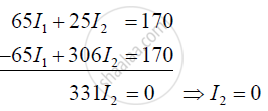
∴ `I_1 = 2A`
APPEARS IN
संबंधित प्रश्न
State the two Kirchhoff’s rules used in electric networks. How are there rules justified?
Given n resistors each of resistance R, how will you combine them to get the (i) maximum (ii) minimum effective resistance? What is the ratio of the maximum to minimum resistance?
State Kirchhoff's rules and explain on what basis they are justified.
Given the resistances of 1 Ω, 2 Ω, 3 Ω, how will be combine them to get an equivalent resistance of (6/11) Ω?
Twelve wires, each of equal resistance r, are joined to form a cube, as shown in the figure. Find the equivalent resistance between the diagonally-opposite points a and f.

Find the equivalent resistances of the networks shown in the figure between the points a and b.
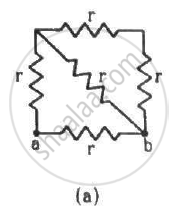
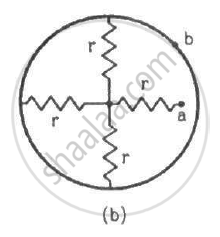
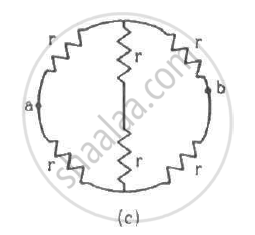
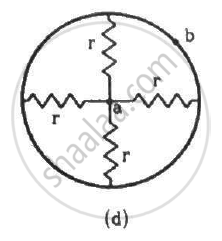
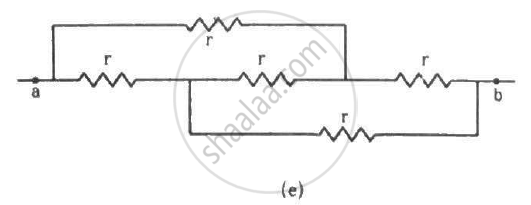
A capacitor of capacitance 8.0 μF is connected to a battery of emf 6.0 V through a resistance of 24 Ω. Find the current in the circuit (a) just after the connections are made and (b) one time constant after the connections are made.
Two unequal resistances, R1 and R2, are connected across two identical batteries of emf ε and internal resistance r (see the figure). Can the thermal energies developed in R1 and R2 be equal in a given time? If yes, what will be the condition?
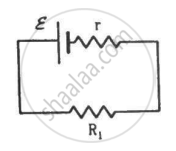

The e.m.f of The battery in a thermocouple is doubled. The rate of heat generated at one of the junction will.
Why are alloys used for making standard resistance coils?
